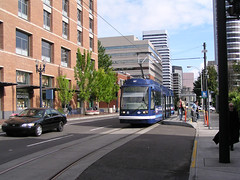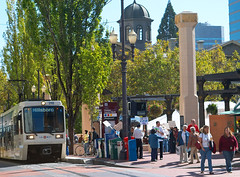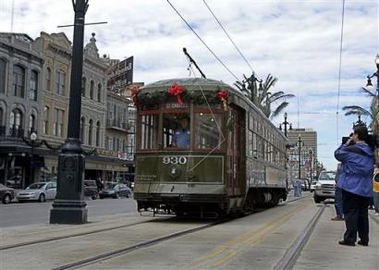Curb lane vs. median lane placement of surface-based rail transit
I was in a meeting today and one of the things discussed, if streetcars do go up and down K Street NW--which they are supposed to as part of the conversion eventually of the Downtown Circulator to a streetcar system, and the connection of this line to the H Street streetcar proposal--they should be on the curb lane rather than in the middle of the street.

Curb lane good, disconnected medians bad and ugly. Case in point: City of Portland, Oregon vs. Canal Street in New Orleans.

Portland Streetcar.

Portland's light rail is also "surgically" inserted into the street fabric in a manner that complements the spaces around, without creating disconnected islands. Photo by Miles Hochstein: Portland Ground.

This AP Photo by Chitose Suzuki doesn't do justice to how ugly the Canal Street streetcar system, a concrete island in the middle of the street, really looks. (He must be an excellent photographer.)
I say curb lane. Putting them in the middle of the street is designed to aid automobility by reducing the likelihood of the reduction of street-based parking spaces. Although, transit people argue this is done to increase speed. On the other hand, throwing pedestrians in the middle of the street isn't all that great, and it diverts potential customers from street-side spaces to retail-less islands.

Even Nordstrom's, across the street from Pioneer Courthouse Square (a stone's throw from the light rail stop shown above), understands the value of catering to potential customers on the street.
Index Keywords: urban-design-placemaking; transit



0 Comments:
Post a Comment
<< Home